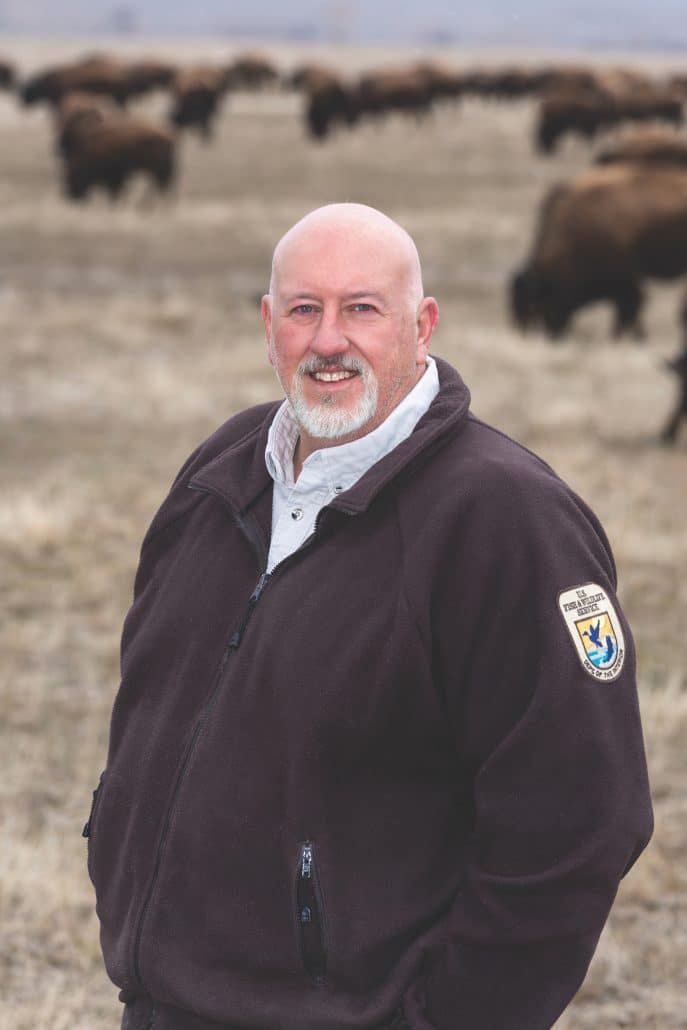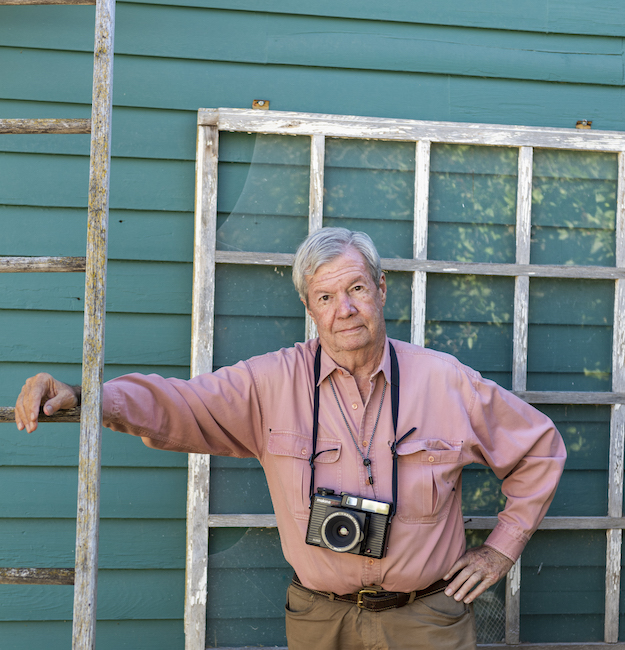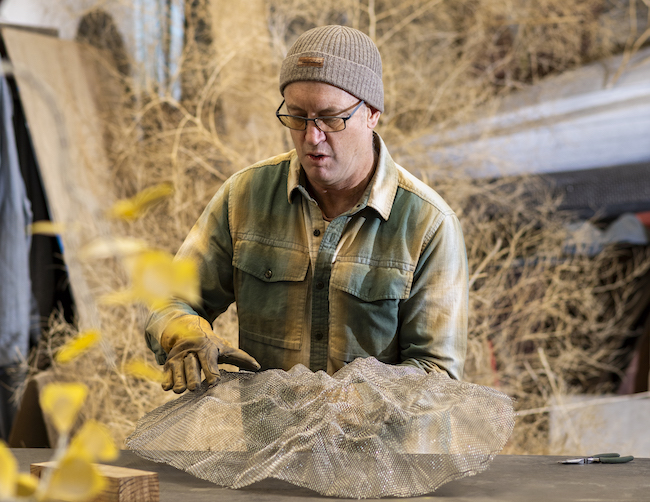The call of the elk in Jackson Hole
03 Nov 2022
Frank Durbian moves from the Midwest to manage the National Elk Refuge during a key moment in its history
Summer 2022
Written By: Molly Absolon | Images: Mark Gocke and David Bowers
Wildlife biologists, like the animals they study, tend to migrate. For animals, migration allows them to find food and better habitat. For biologists, it allows them to study new species and work in new ecosystems.
That’s the story for Frank Durbian, a 25-year U.S. Fish and Wildlife Service veteran whose career has included working with black-footed ferrets, swift foxes, greater prairie chickens, and waterfowl. Now, as the man charged with managing the National Elk Refuge, he can add elk to the list. “It’s pretty typical to move around a lot to build experience and get your foot in the door,” Frank says. “I did the wildlife-gypsy thing for years. It’s given me the opportunity to work with lots of species in lots of different environments. That keeps things interesting and intellectually challenging.” Most of Frank’s experience is in the prairie-wetland systems of the Midwest. He grew up in Kansas, so the environments were familiar to him, and he always had an interest in local animals, birds, and insects. “I liked trying to figure out how everything ticked in the natural world,” Frank says. “I was so excited when I got my first permanent position with the fish and wildlife service and was given my uniform. I’d been working toward that goal since I started exploring the Flint Hills of Kansas as a kid.” Frank was drawn to the National Elk Refuge position for a variety of reasons — including the fact that it is part of the relatively intact Greater Yellowstone Ecosystem. “I’ve been in a lot of fragmented ecosystems,” he says. “It’s exciting to be in a place where all the animal species are still here. We have big megafauna like the elk, but we also have one of the largest wetland complexes in Wyoming, where you can find all sorts of birds and smaller mammals. There is so much more [on the refuge] than people realize.” In addition to its wide range of species, the National Elk Refuge also faces a wide range of issues. Frank says that when he came to Jackson, the number of acres under his care was reduced, but the number of social and political challenges he faced was increased. On the top of his list of challenges is how to deal with supplemental feeding and the emergence of chronic wasting disease in the Jackson Hole elk herd. He’s also working on plans for a new $11.4 million dollar visitor center, which should break ground in 2025. And finally, Frank is in the early stages of developing a 15-year bison and elk management plan for the refuge.
Let’s just say since he took the role in 2020, he’s been busy.
Frank and his wife love the outdoors and have enjoyed getting to know the public lands around Jackson. They camp, ice fish, fly-fish, hunt, and hike. He likes to tie his own flies and makes weighted duck decoys from canvas and wire that he uses for hunting and to decorate his office on the refuge.
In addition to its wide range of species, the National Elk Refuge also faces a wide range of issues. Frank says that when he came to Jackson, the number of acres under his care was reduced, but the number of social and political challenges he faced was increased. On the top of his list of challenges is how to deal with supplemental feeding and the emergence of chronic wasting disease in the Jackson Hole elk herd. He’s also working on plans for a new $11.4 million dollar visitor center, which should break ground in 2025. And finally, Frank is in the early stages of developing a 15-year bison and elk management plan for the refuge.
Let’s just say since he took the role in 2020, he’s been busy.
Frank and his wife love the outdoors and have enjoyed getting to know the public lands around Jackson. They camp, ice fish, fly-fish, hunt, and hike. He likes to tie his own flies and makes weighted duck decoys from canvas and wire that he uses for hunting and to decorate his office on the refuge. 










